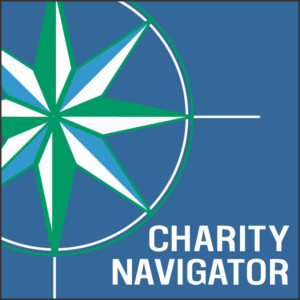By: Diane Hernandez

The record-setting stock market performance and increase in housing prices has enabled the United States economy to grow largely in recent years. This underlying trend, and an increase in a much larger diverse and intellectual population, has given rise to the financial health of philanthropists.
Charity Navigator is currently one of the largest charity evaluators – with millions of donors utilizing its number-based system to assess thousands of nonprofit organizations. The website has enabled philanthropists to become more sophisticated when making donations because of the accountable and transparent information available. However, while Charity Navigator is designed as a tool for donors, it is also a tool for charities.
The watchdog organization collects and evaluates the financial and accountability performance information of selected charitable organizations and presents the data analysis in a user-friendly manner. On each organization’s Charity Navigator page, the nonprofit’s mission and programs are reported and the financial information is tested to demonstrate its commitment to donor dollars. The statistics are then used to assign an overall rating – ranging from zero to four stars with a corresponding numerical score. The website also provides historical ratings to show fluctuations in performance over time.
Charts and tables are prepared to show the breakdown of expenses and revenues per the financial data disclosed by the organizations. Charities are rated on various factors such as revenue and expense growth, fundraising efficiency, working capital ratios and expense allocation. Generally, an appropriate benchmark in the allocation of expenses is for 75 percent to be program expenses, according to Sandra Miniutti, vice president of Charity Navigator. The remaining 25 percent is allocated to overhead, which includes fundraising and management expenses. Nonprofits that meet this allocation standard have the highest ratings.
The financial rating system of Charity Navigator is not without controversy. An organization can lose points or drop their rating if they have an outlier year. Perhaps it experienced a reduction in funding or other budget cuts, or maybe it decided to invest in some infrastructure to help the organization operate more efficiently in the future. Organizations have also voiced concerns that Charity Navigator can serve as a self-fulfilling prophecy: if an organization is in need of help, a drop in rating might cause alarm in potential donors who then choose to donate elsewhere.
Fortunately, an organization’s financial factors are not the only areas evaluated by Charity Navigator. Charities that are accountable and transparent will get additional points on Charity Navigator’s rating system. An organization that is willing to explain its actions to sponsors and disclose basic administrative and financial information on the Form 990 and website are seen as open and transparent with a much higher chance of being compliant and fiscally responsible. Charities can lose points for various governance transgressions as reported on the Form 990, including:
- Lack of board independence
- Fraud or material diversion of assets
- Lack of a financial statement audit and audit committee
- Loans or transactions with insiders
- Incomplete Form 990
- Lack of certain policies and procedures
Organizations can gain evaluation points if they have the following on their website:
- Current listing of board members and key staff
- Most current audited financials and Form 990
- Donor privacy policy
These methods of evaluation are crucial because they determine the performance and effectiveness of the charity.
While Charity Navigator has its critics and fans alike, it is really an asset for public charities and donors. Charities can use it as an additional marketing tool to help ease donor concern of misuse of funds so they can feel more secure about donating. Donations can be more easily attained and spent more efficiently on the vast array of critical services provided by the charities. And as donors become savvier and charitable organizations become more complex, it is imperative that there remains transparency between the organizations and their funding sources. Charity Navigator not only provides clear and concise information for donors, but it also provides a benchmark for which the charities can aim to increase their inflow of donations.

